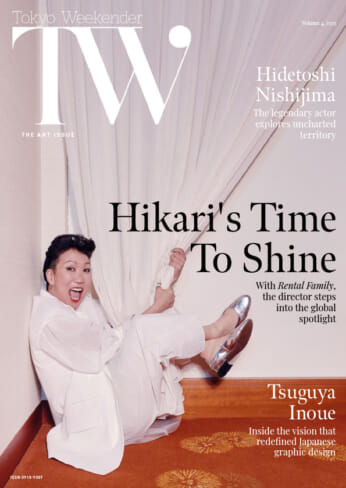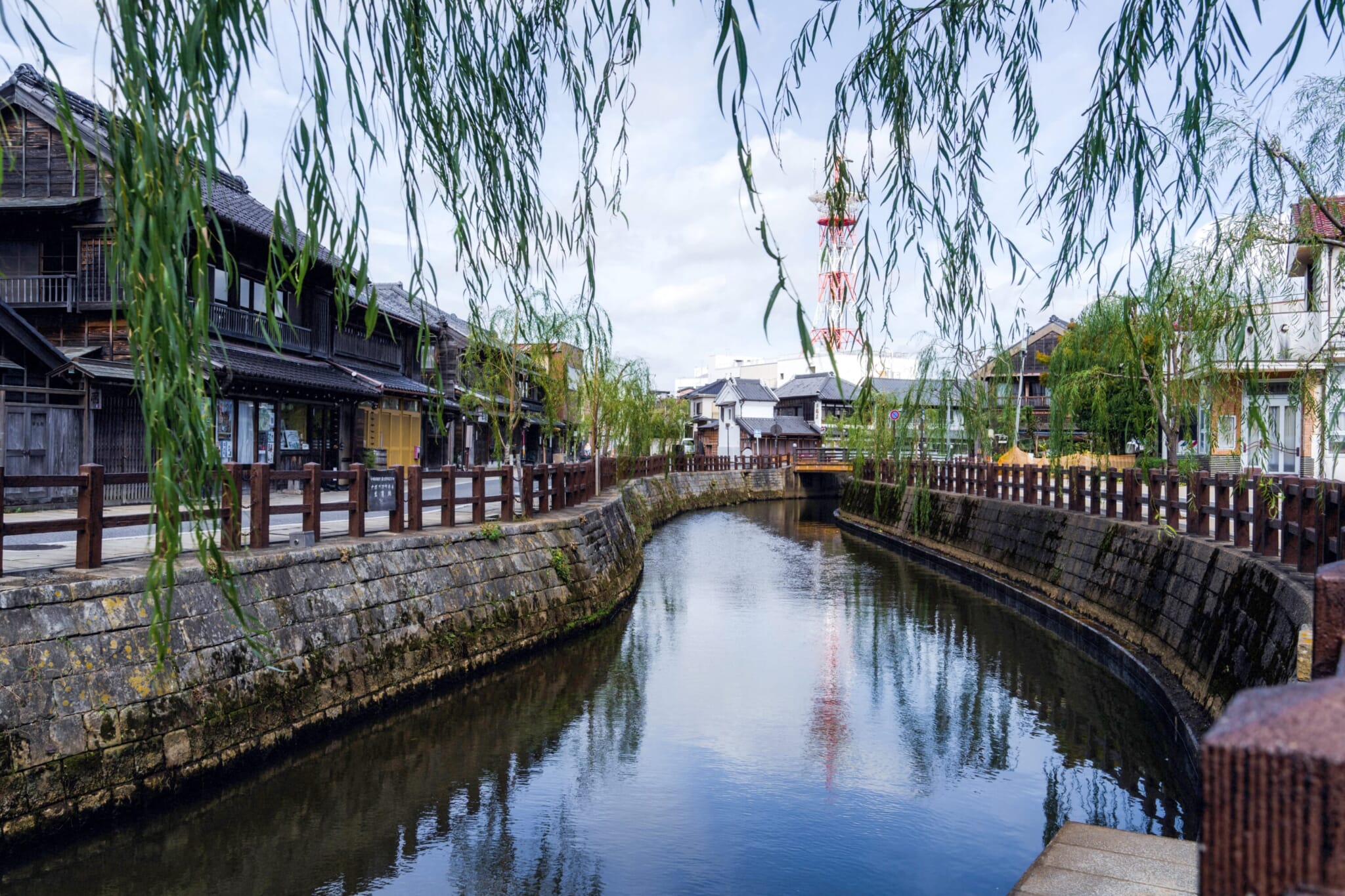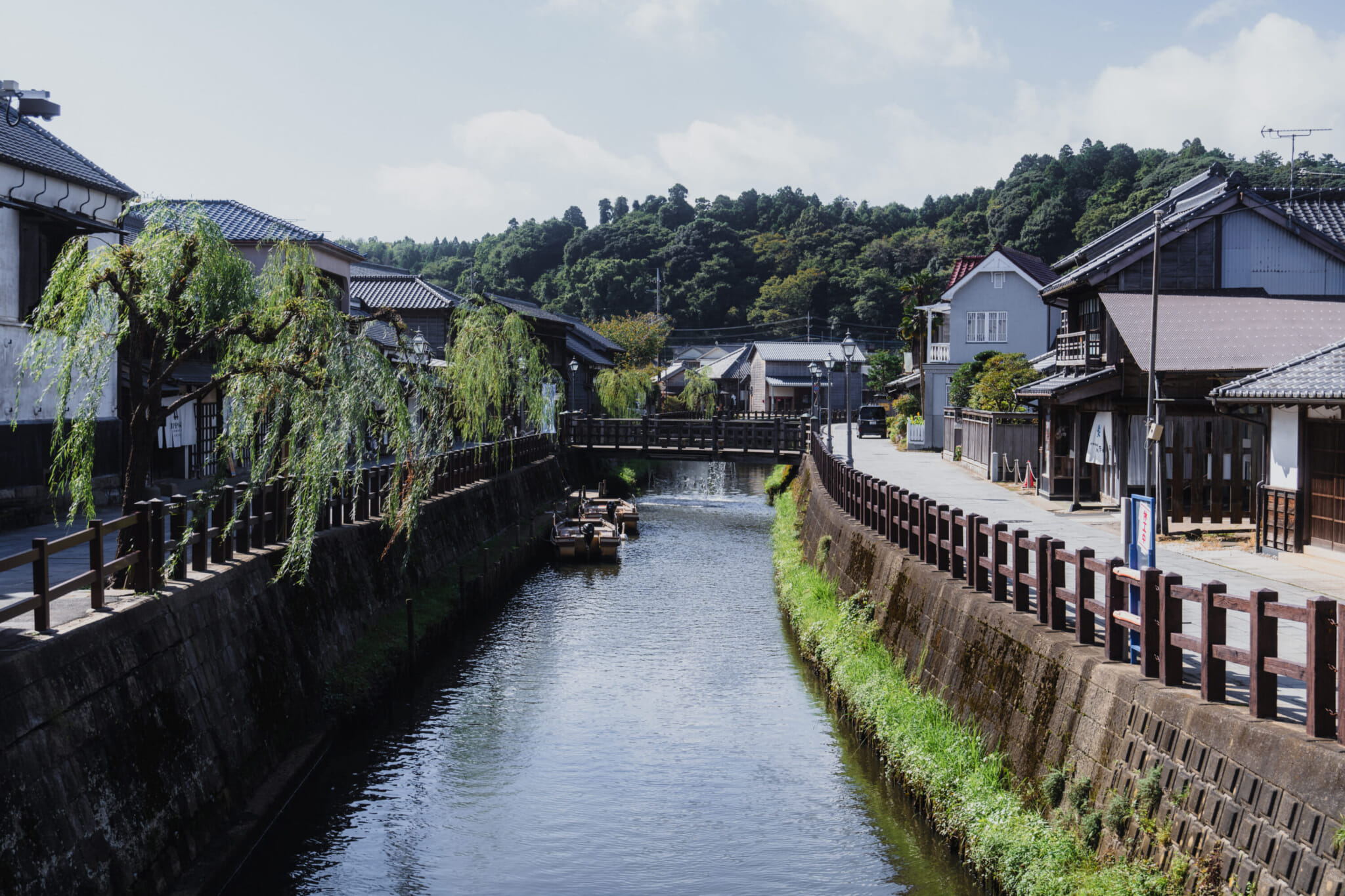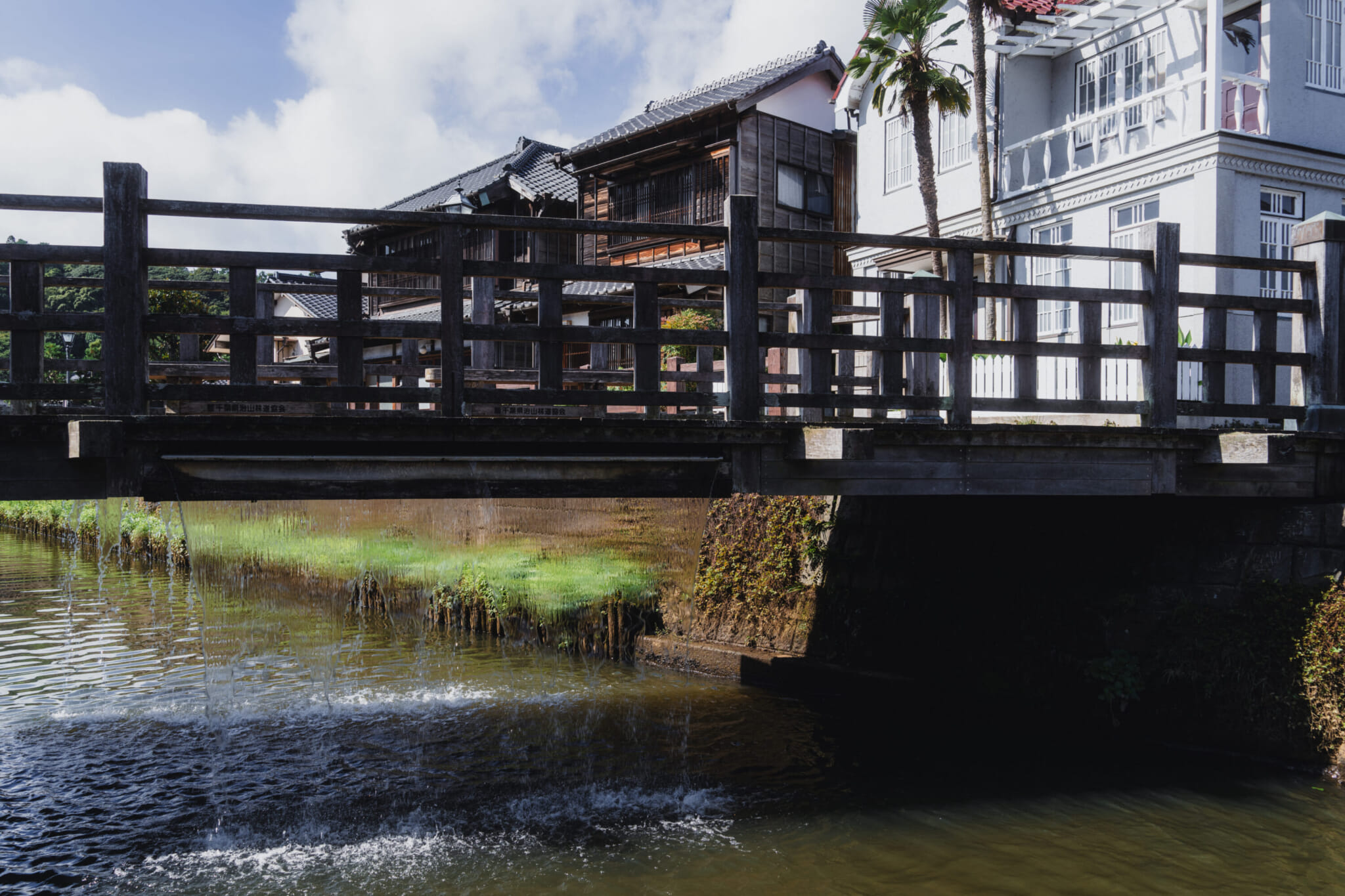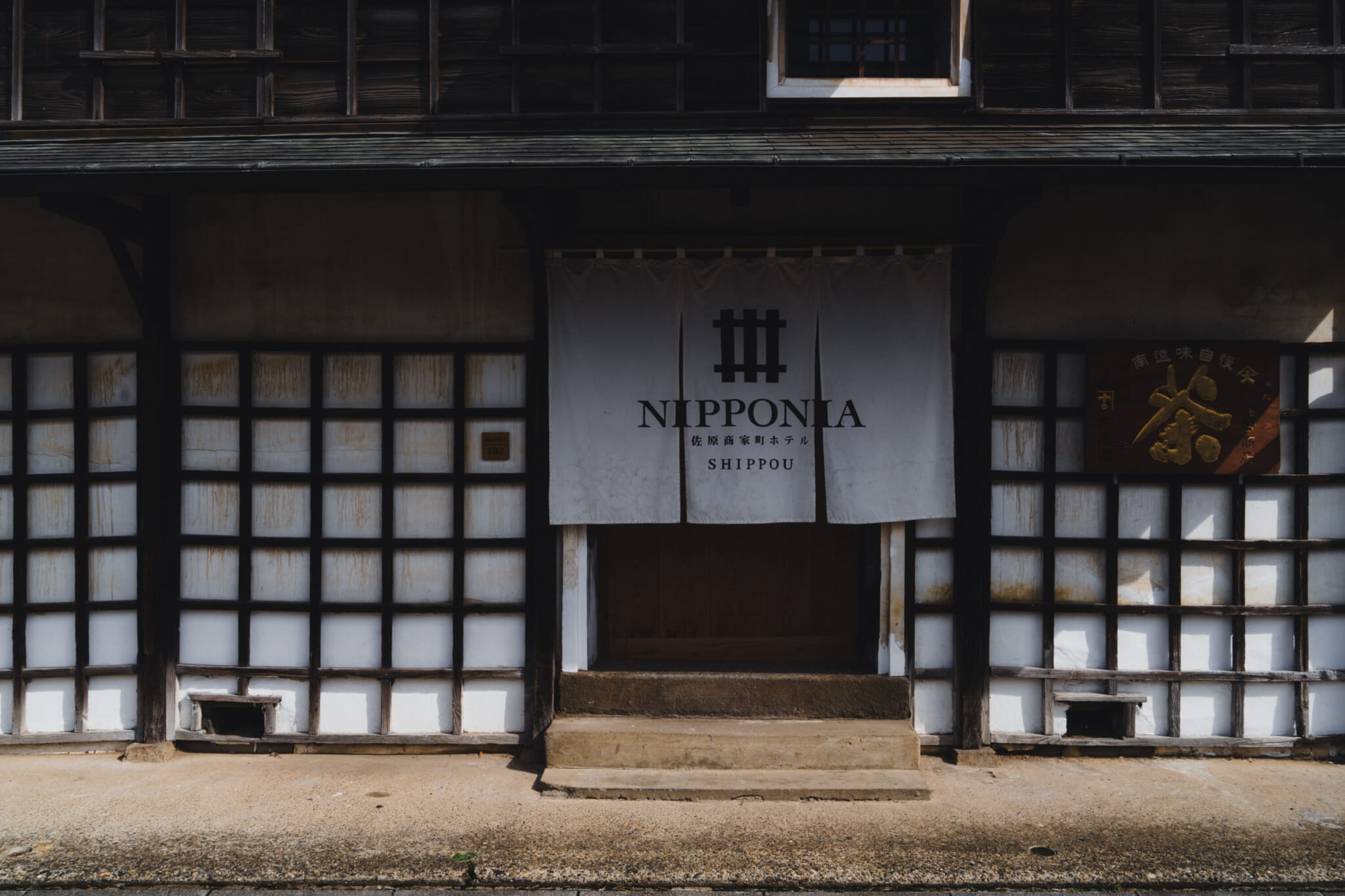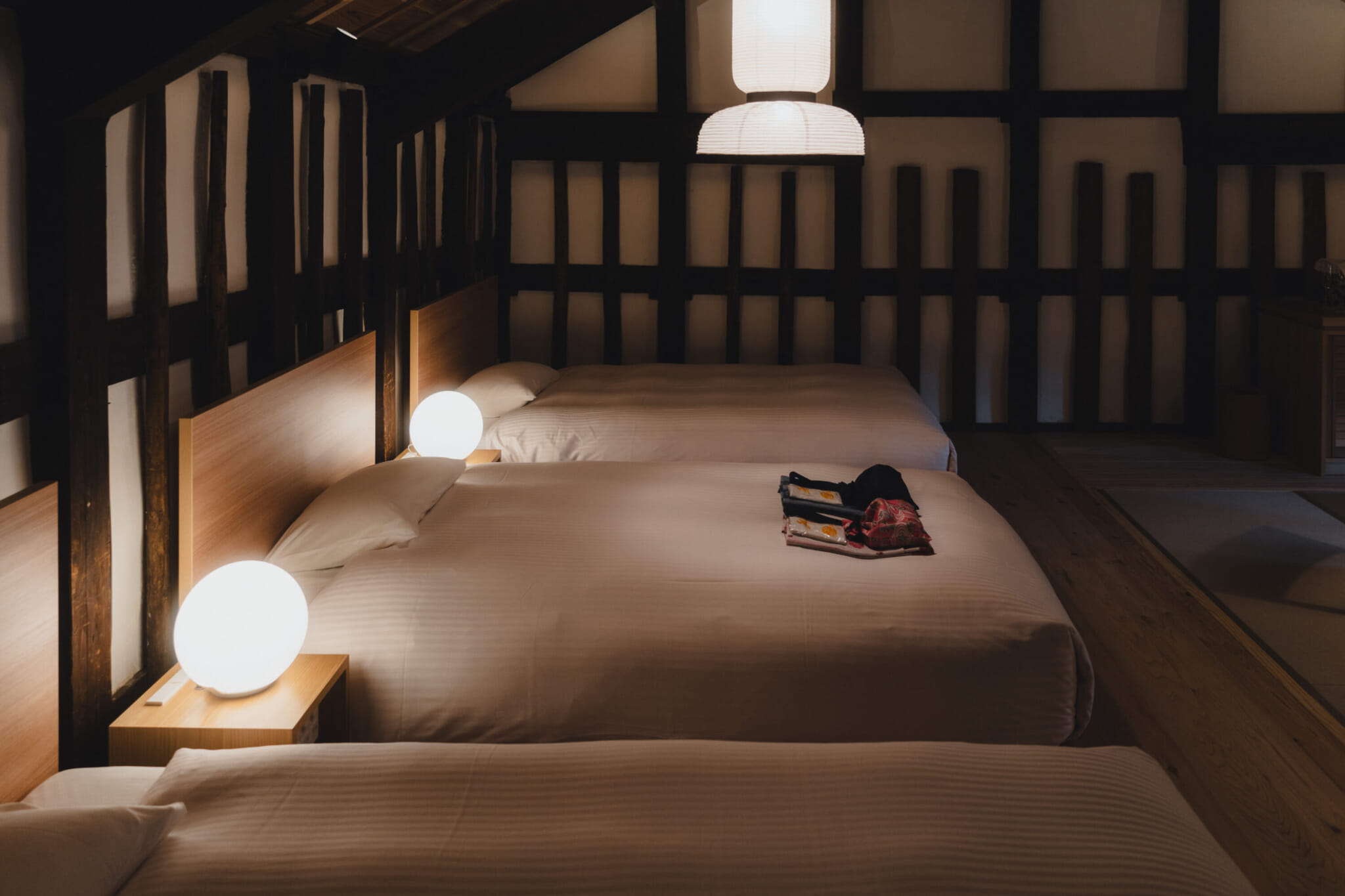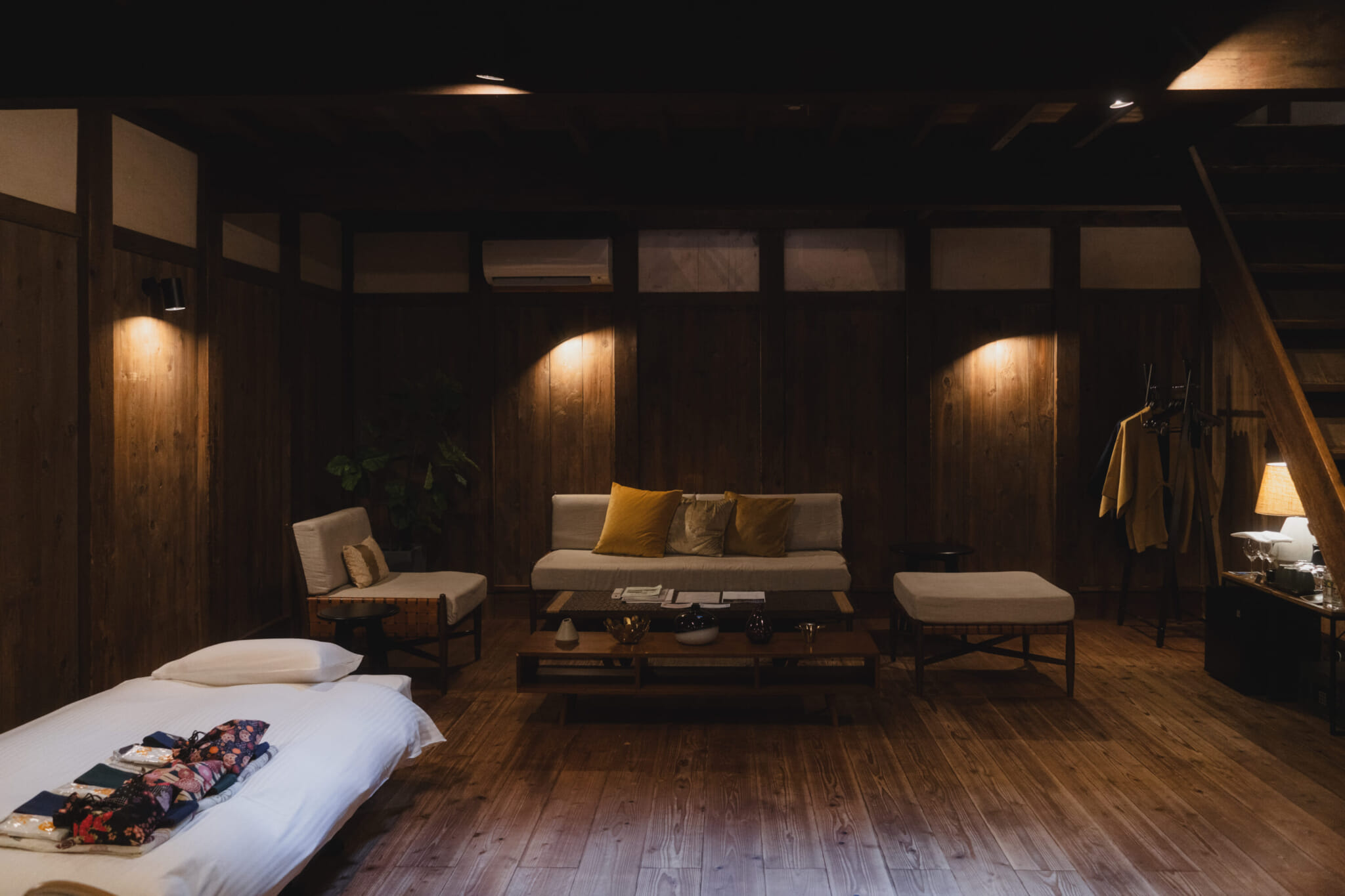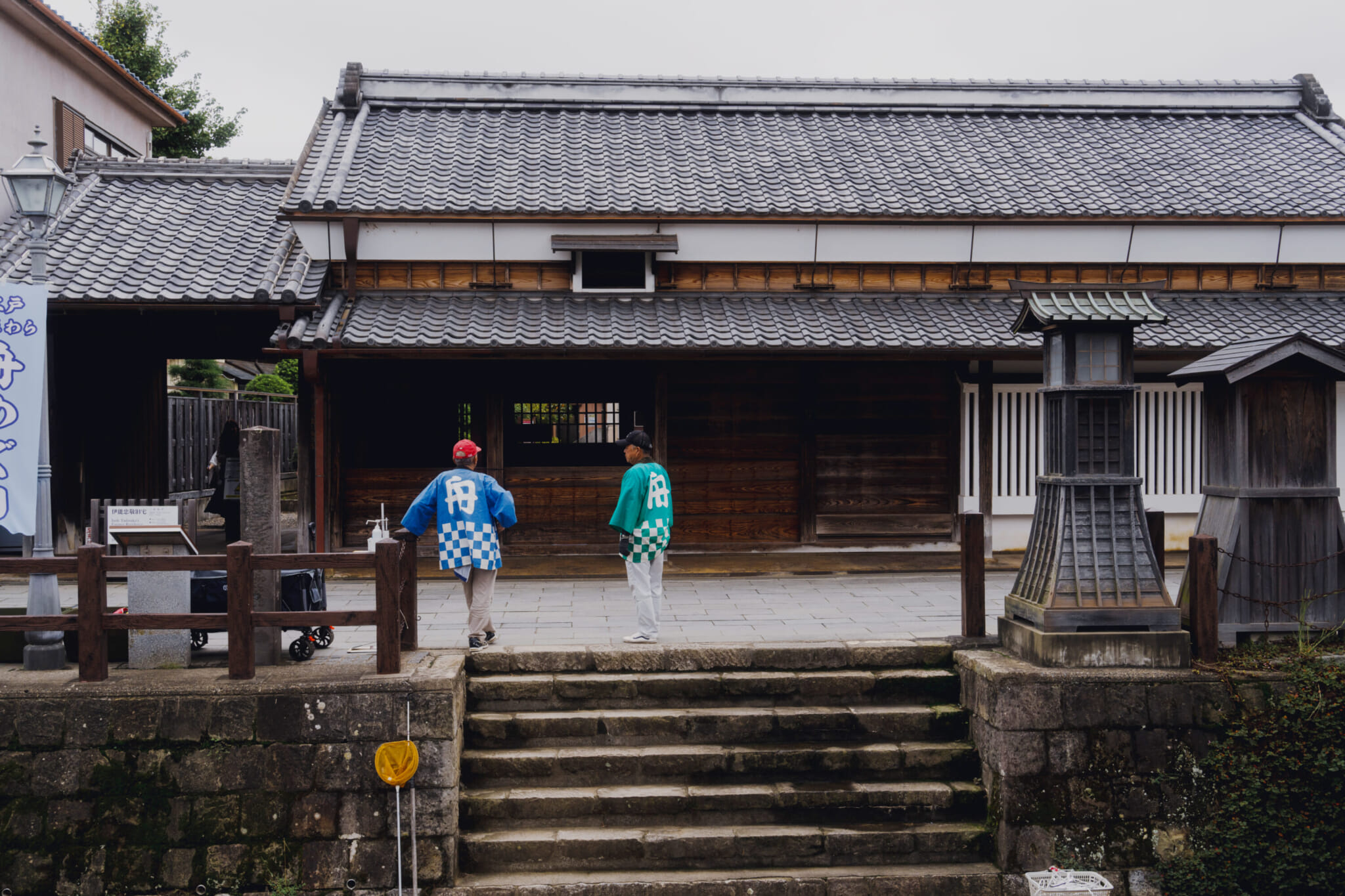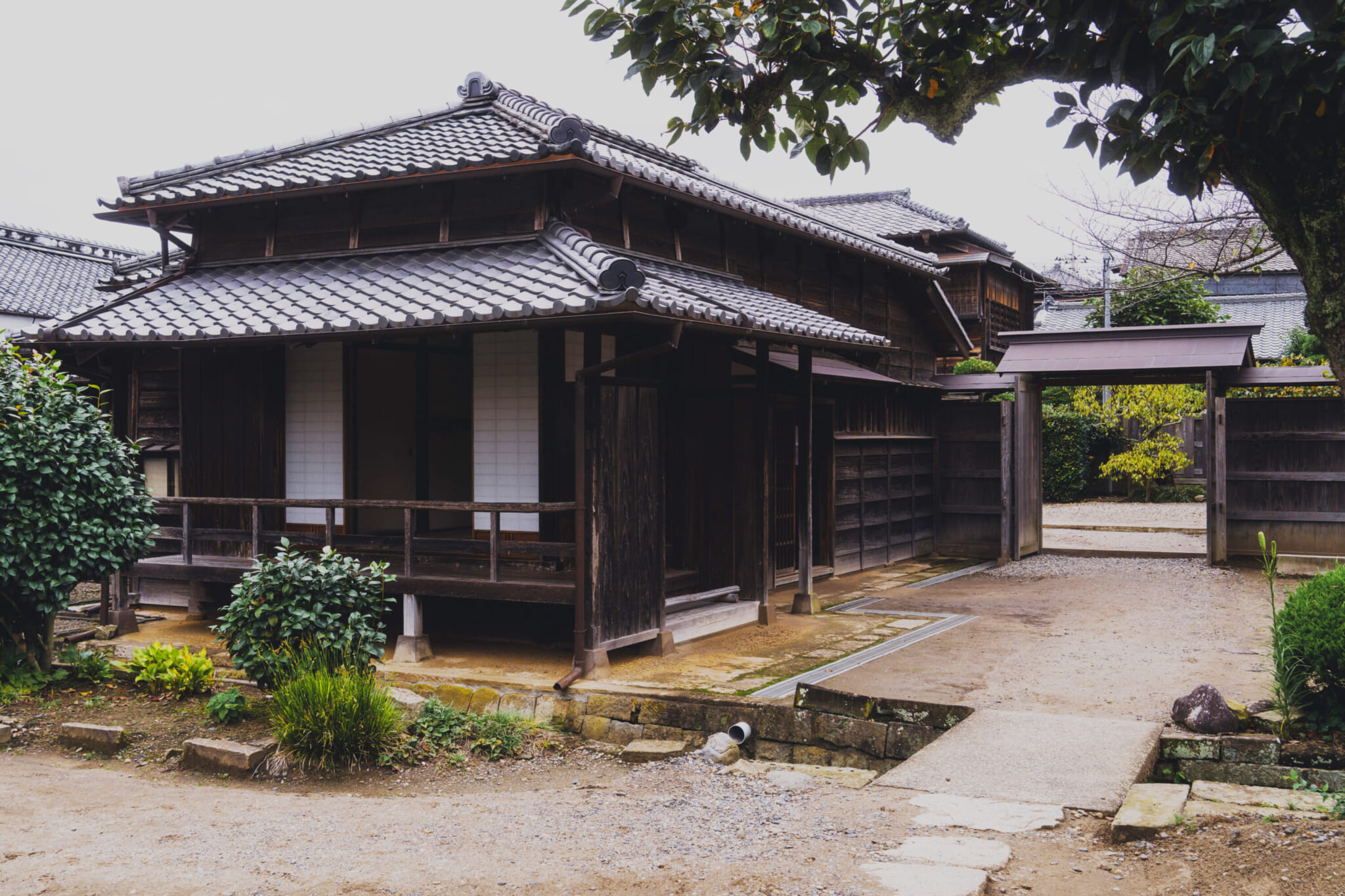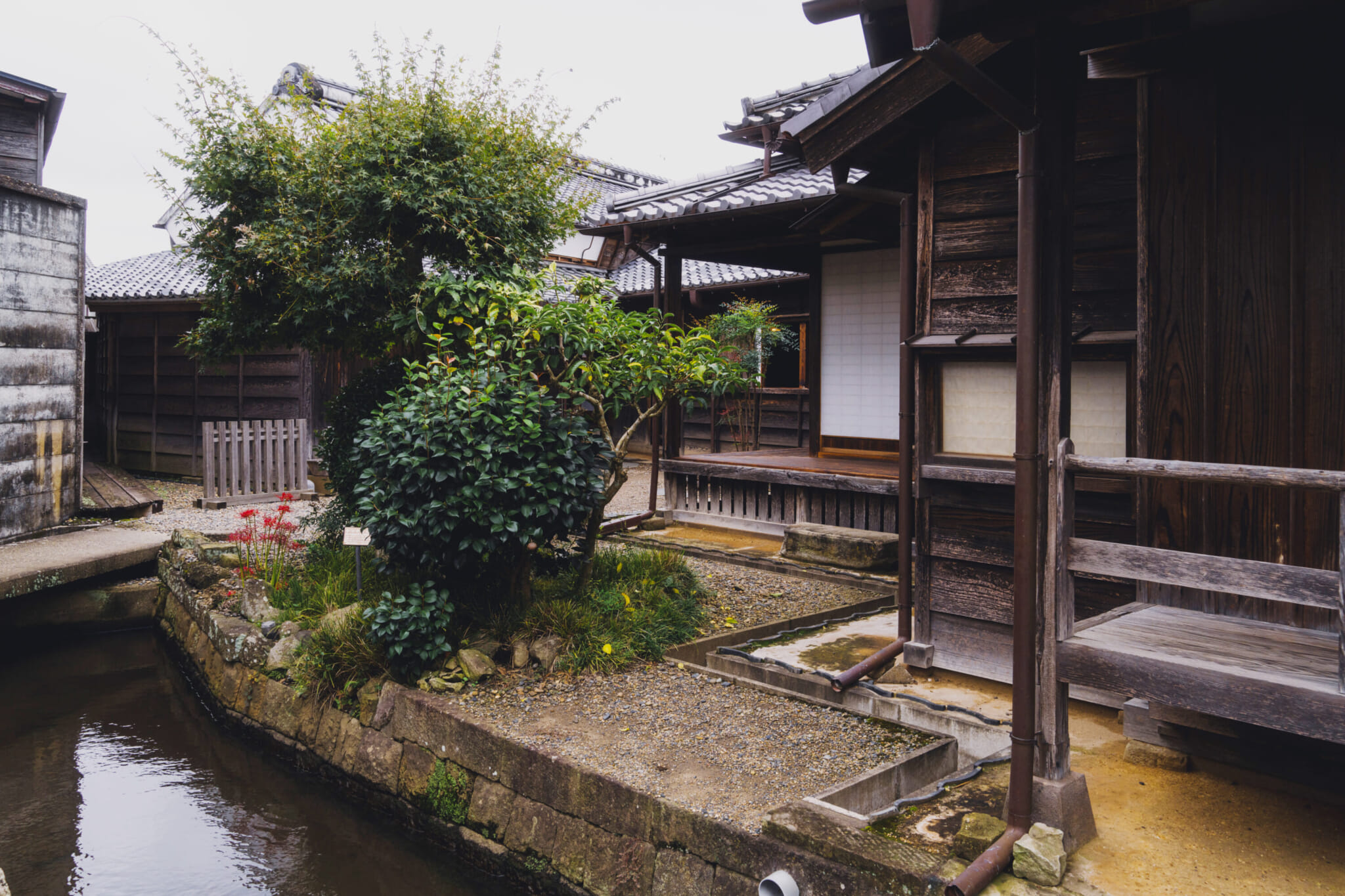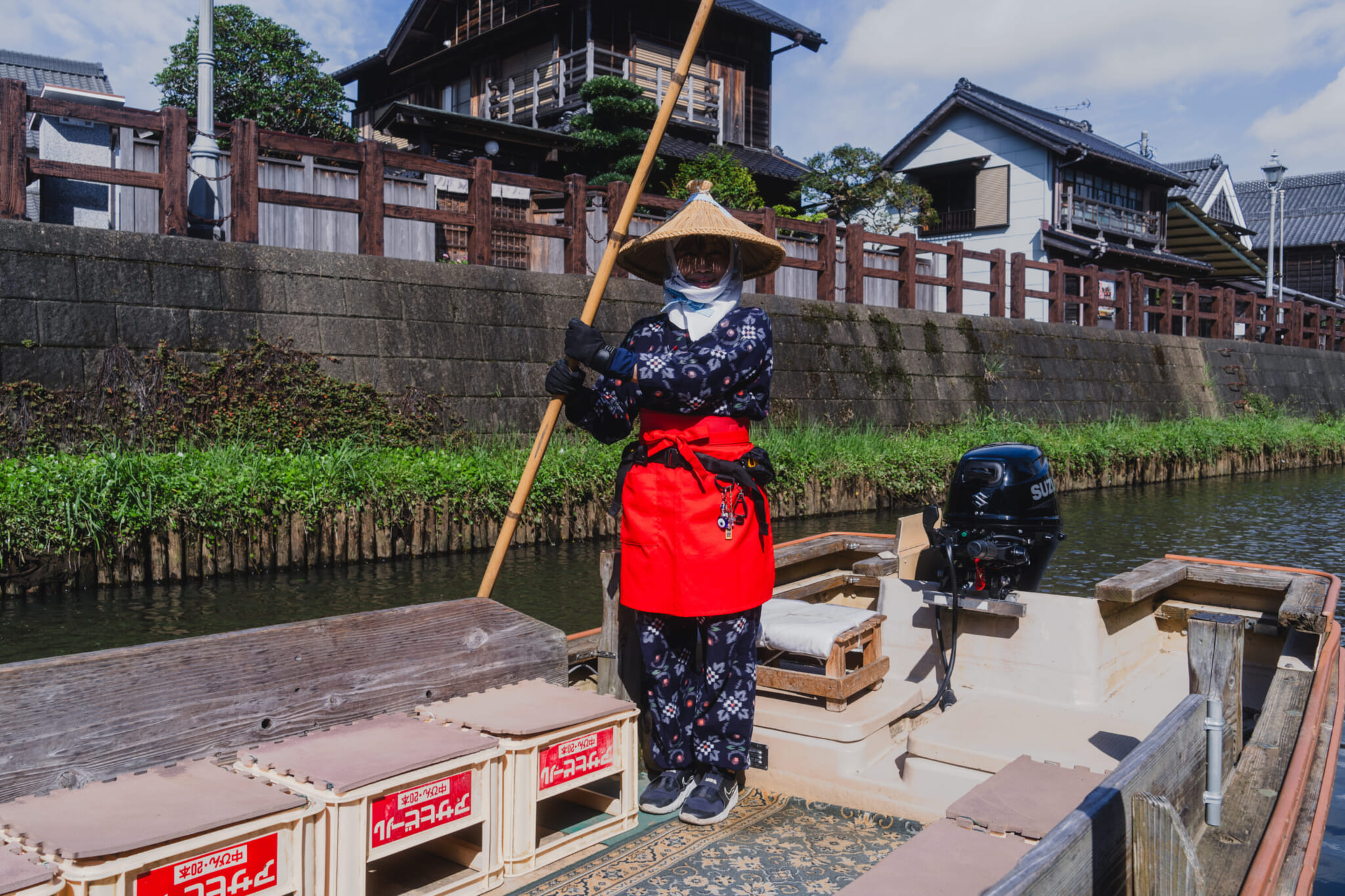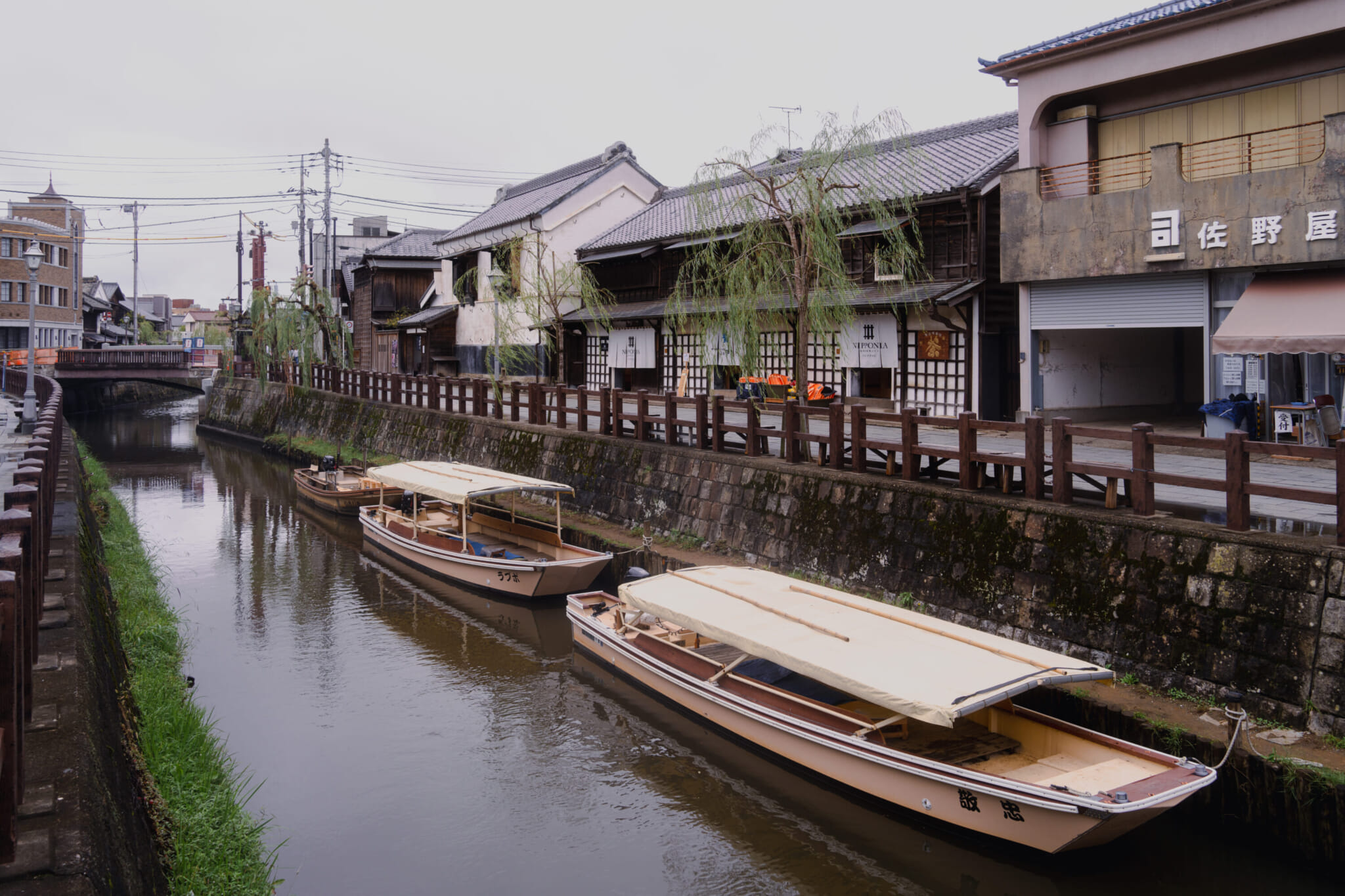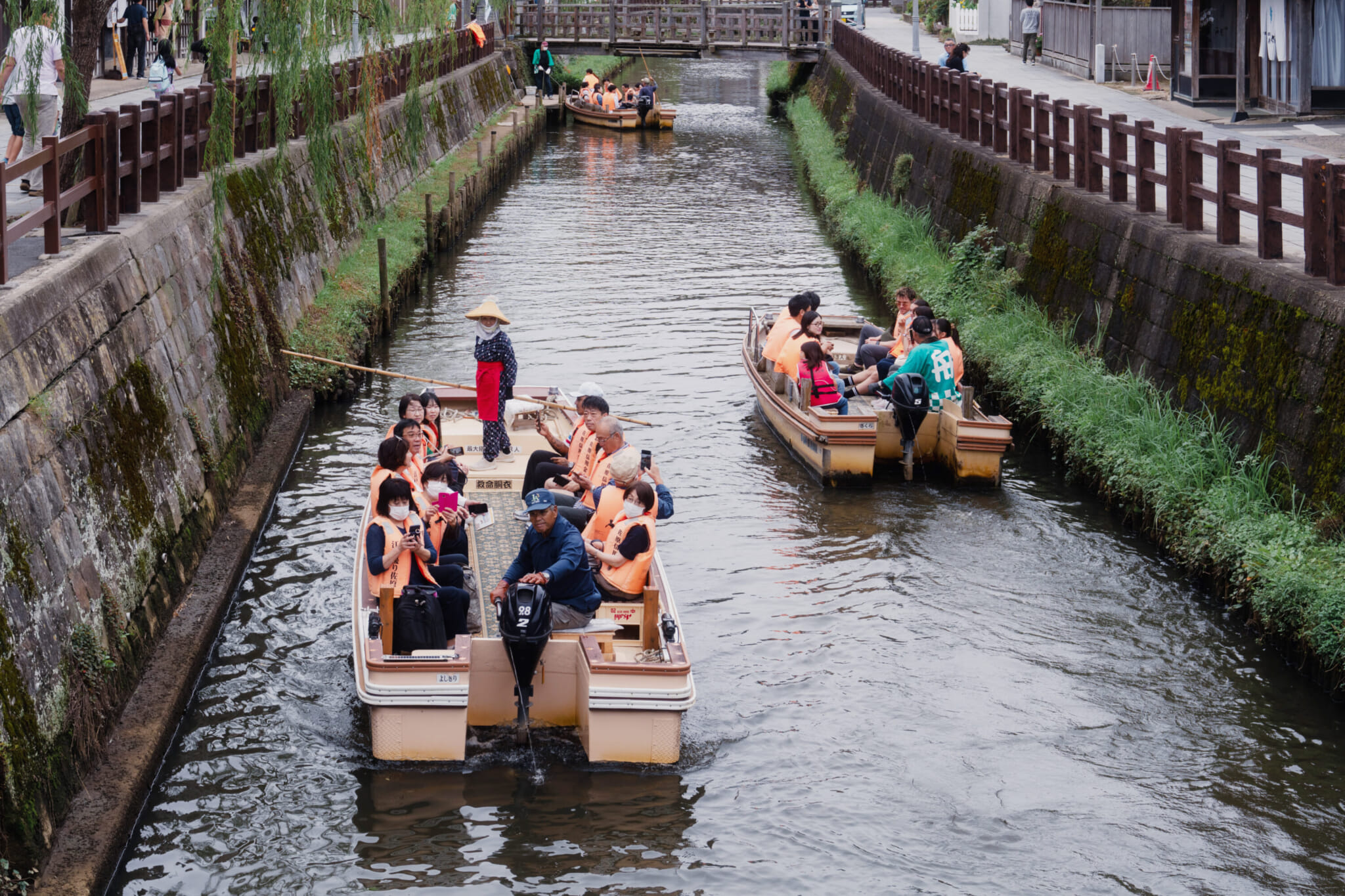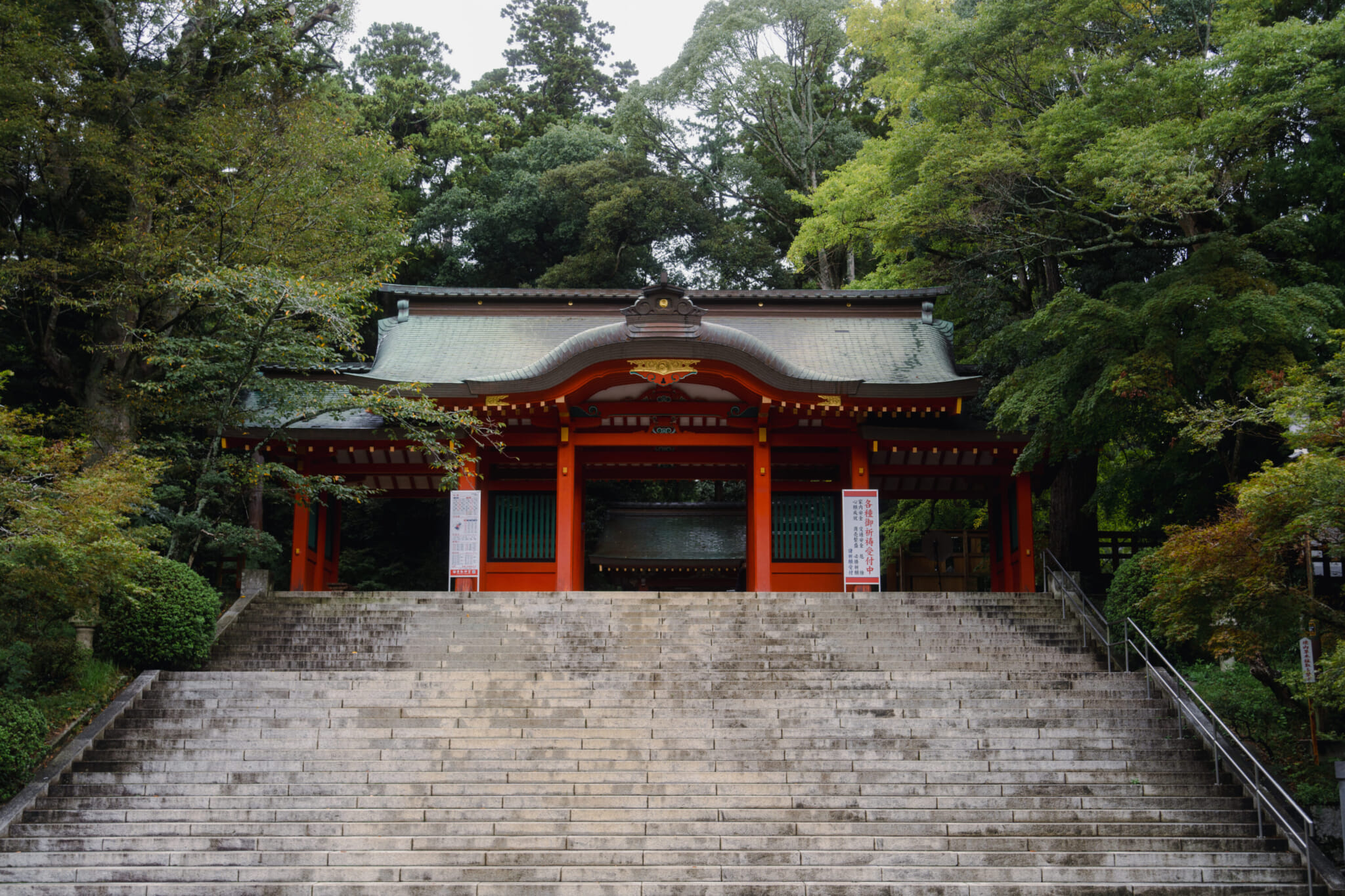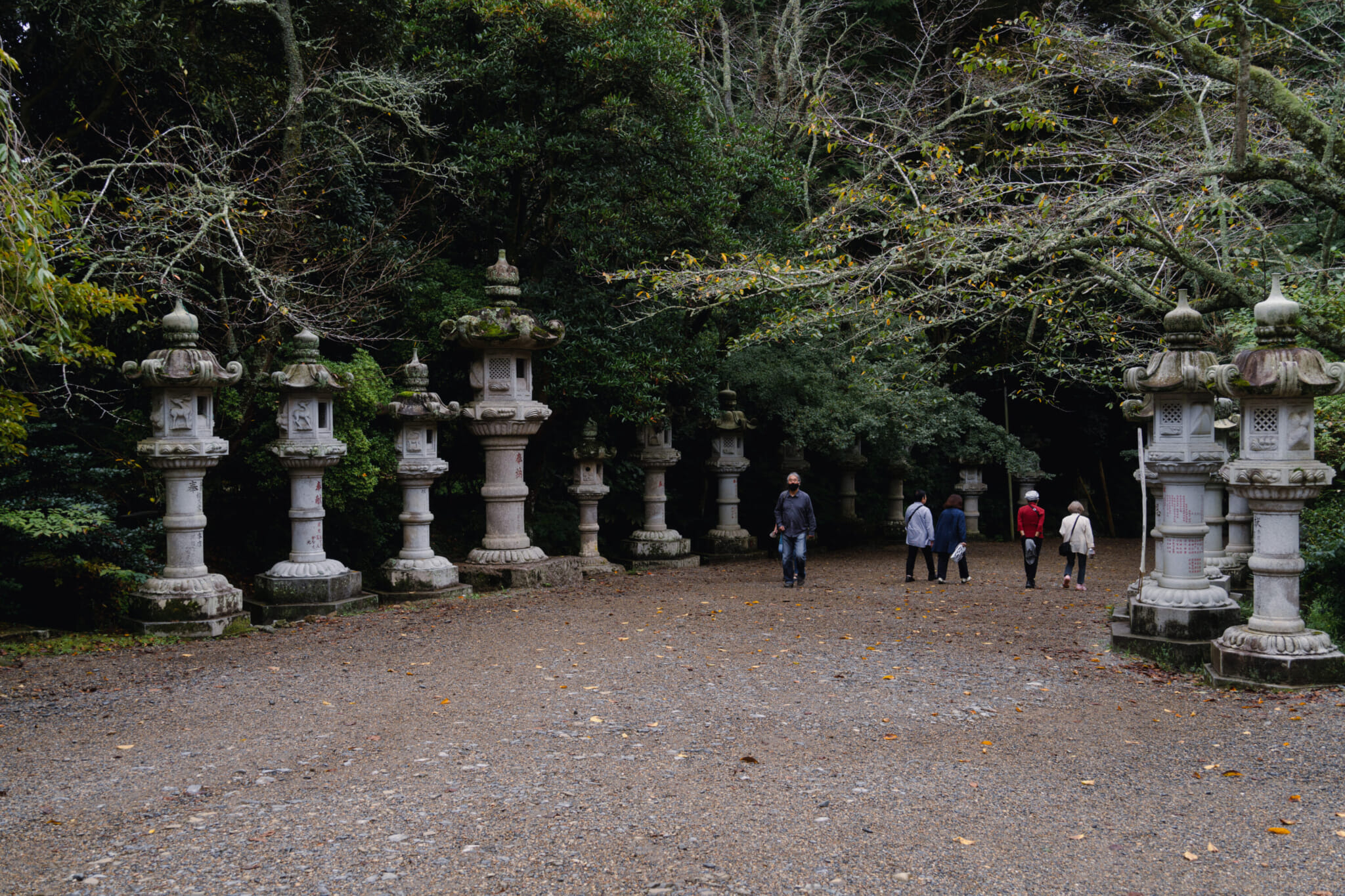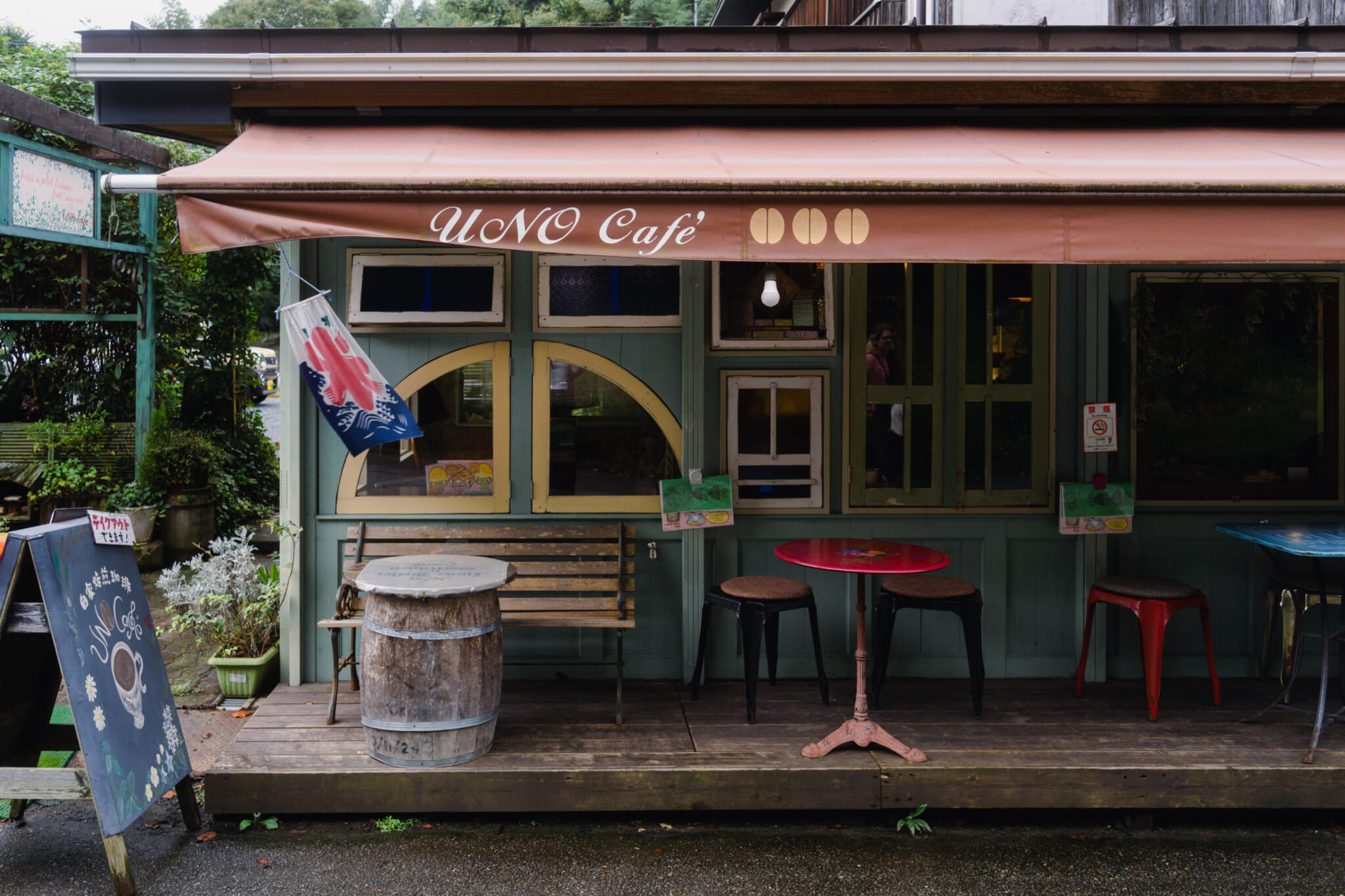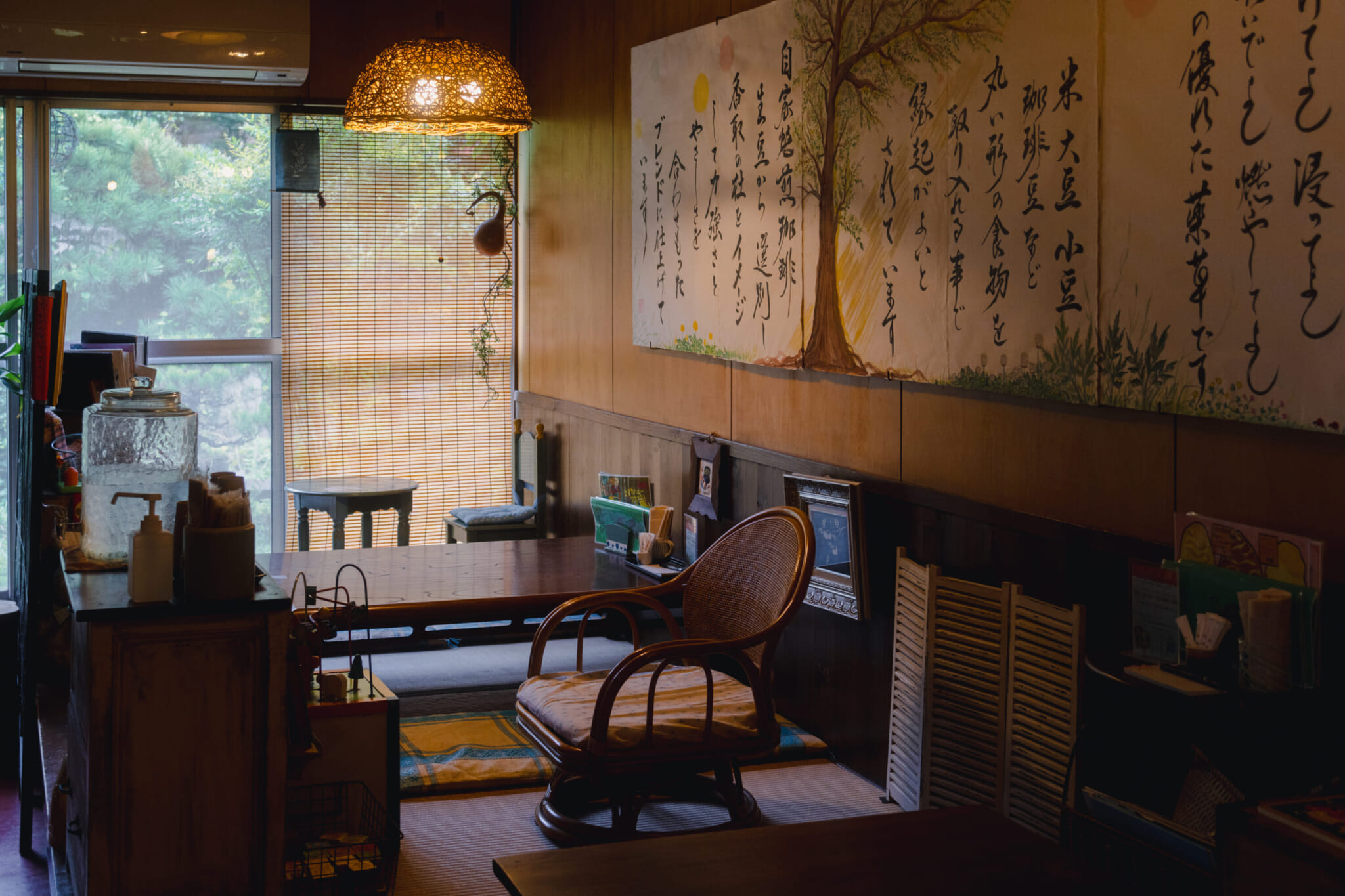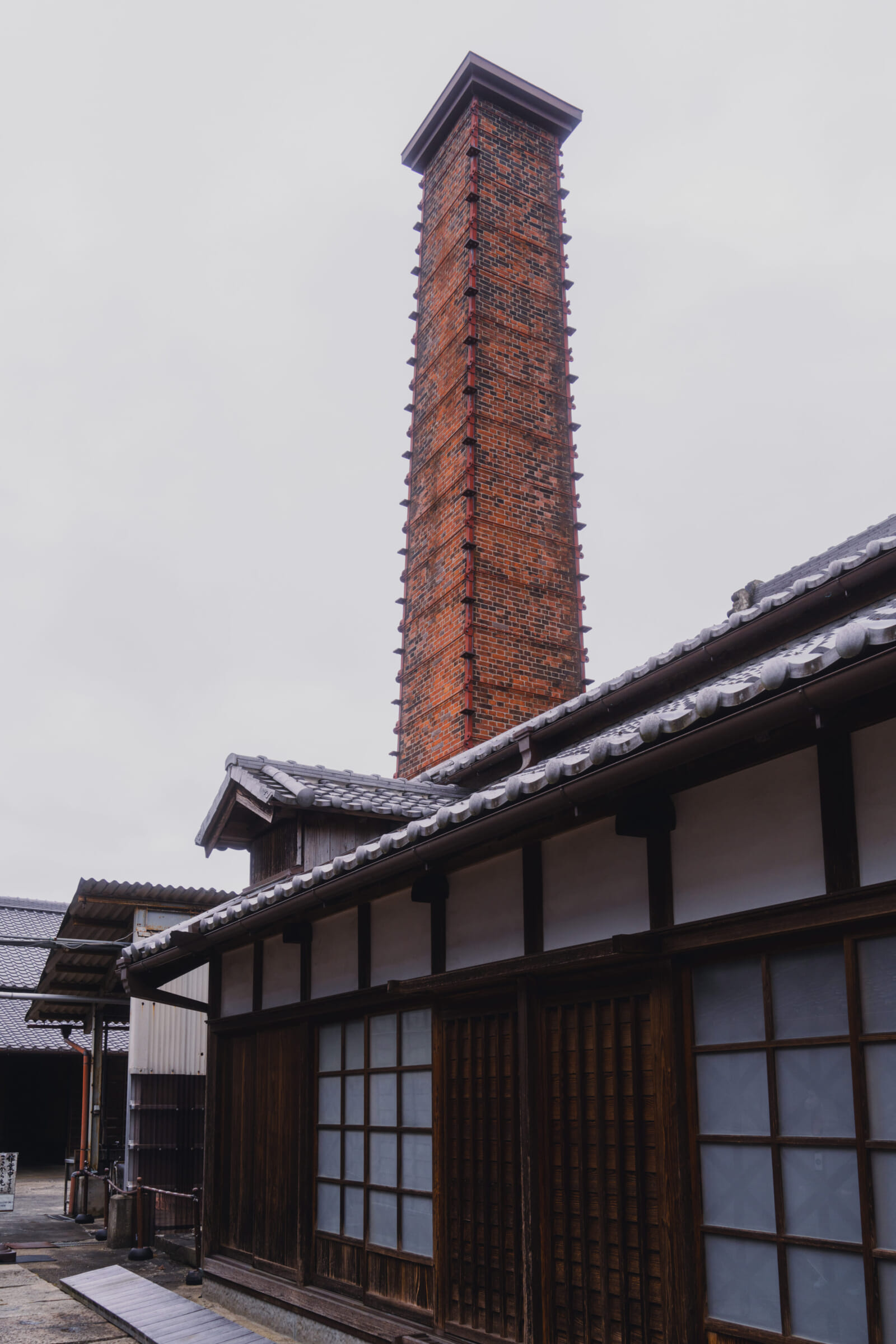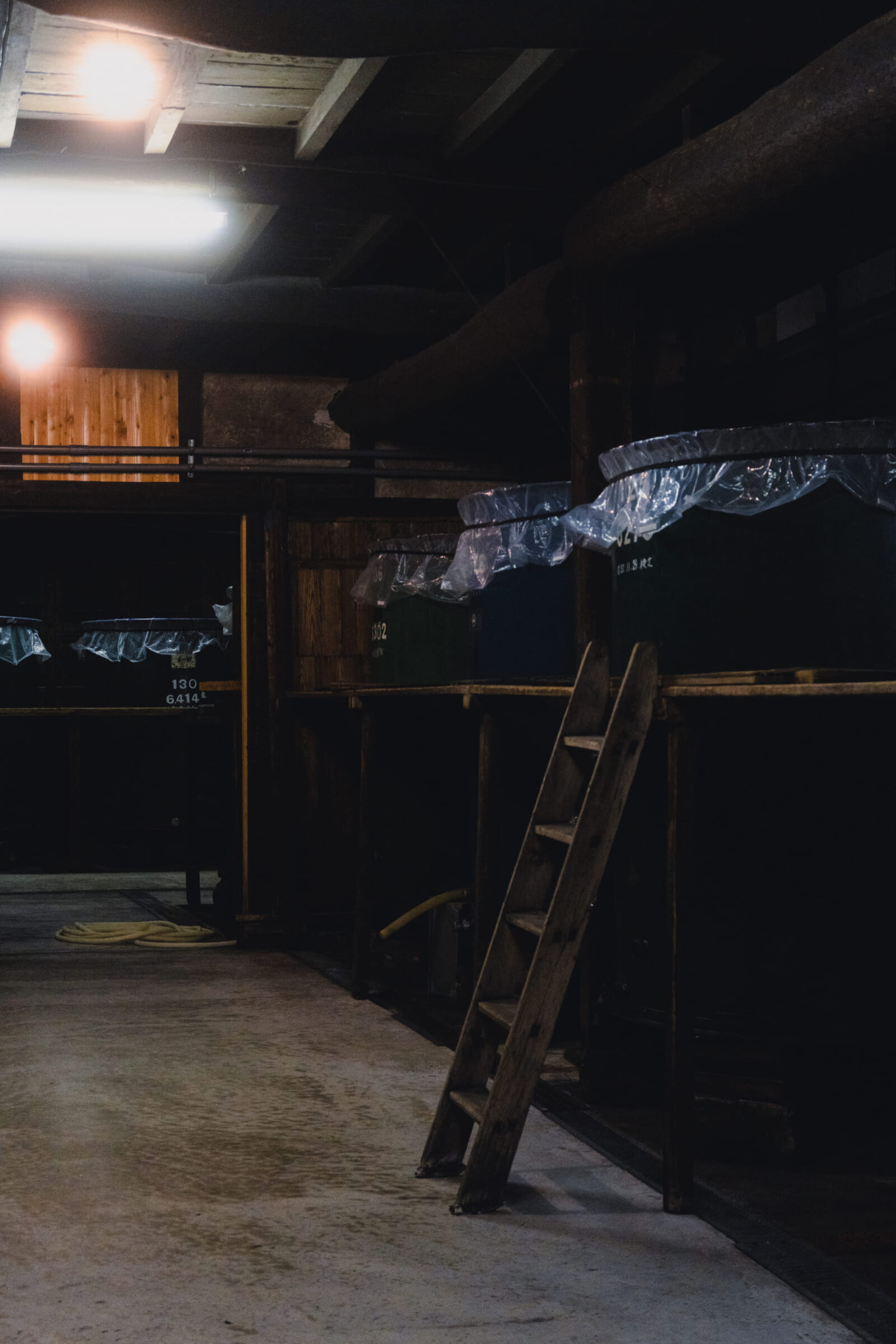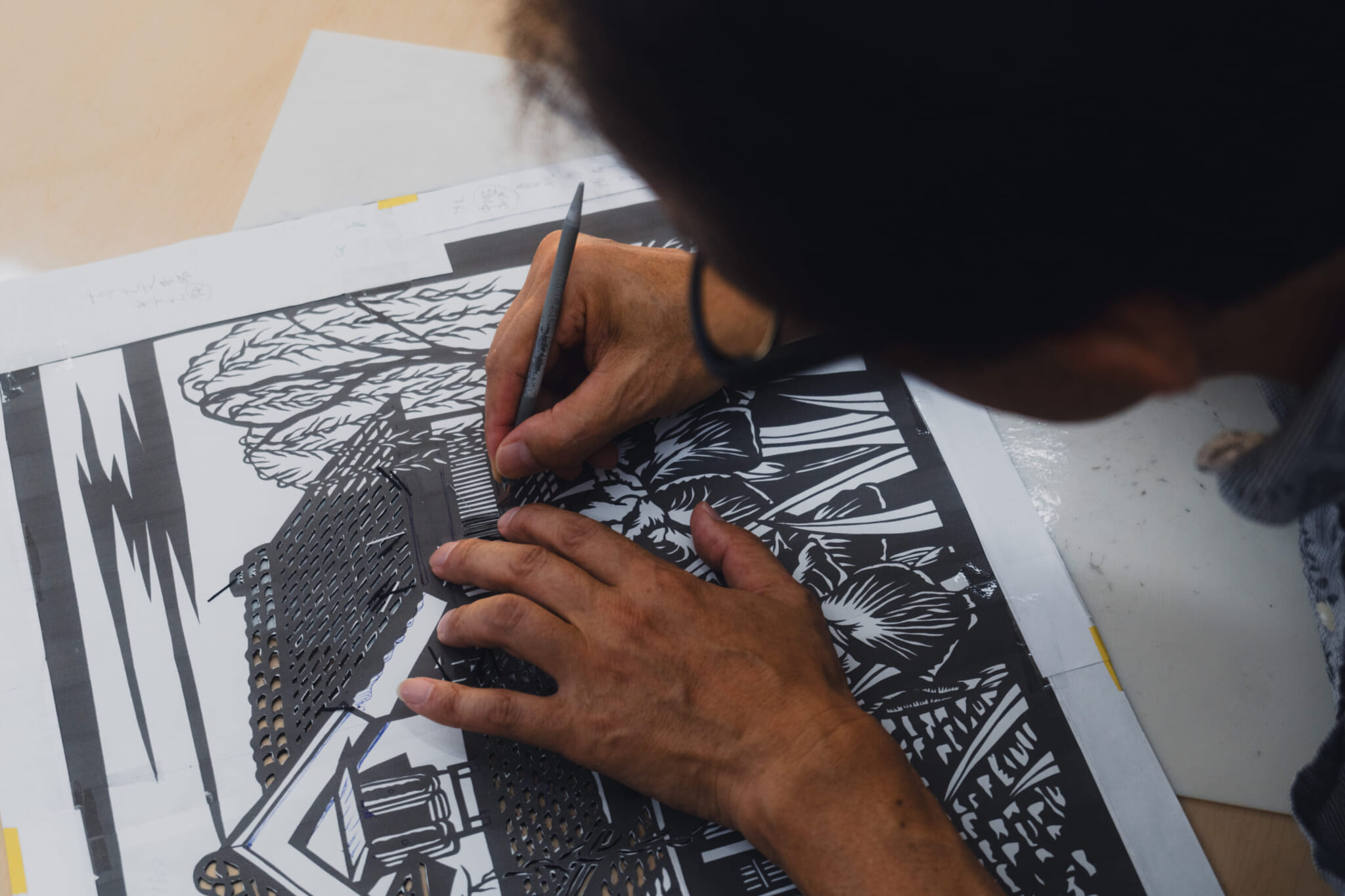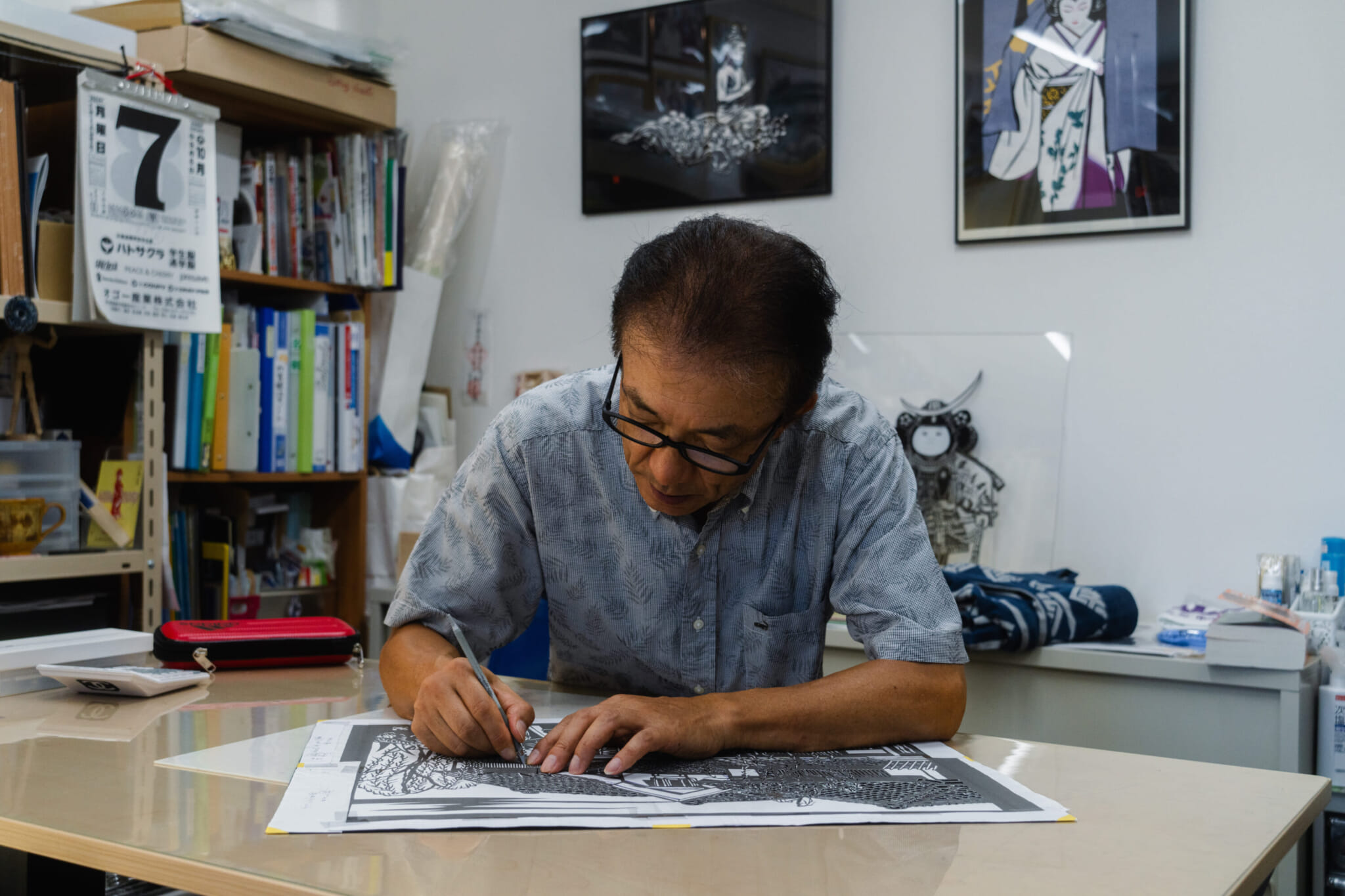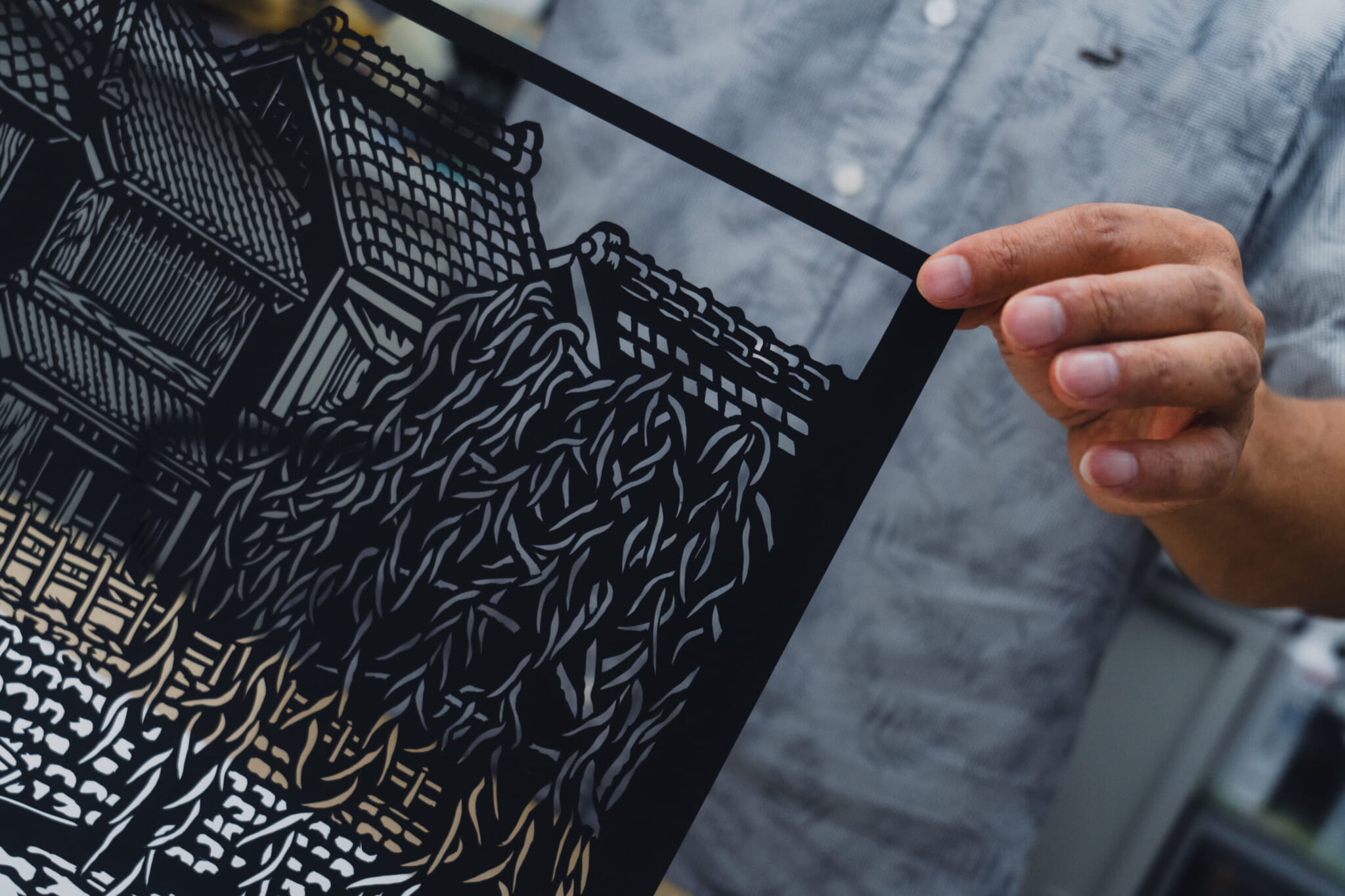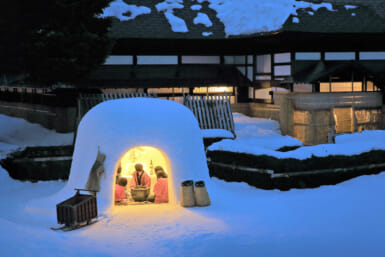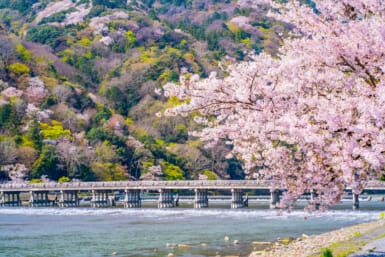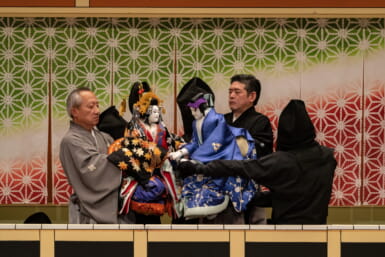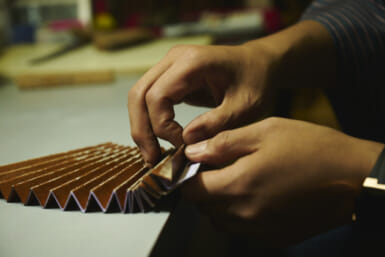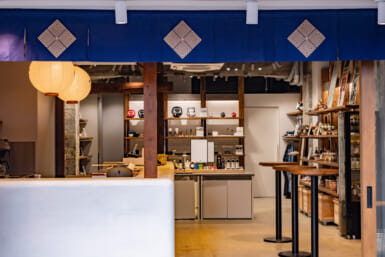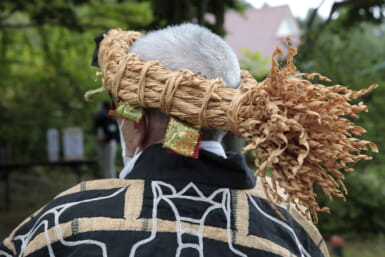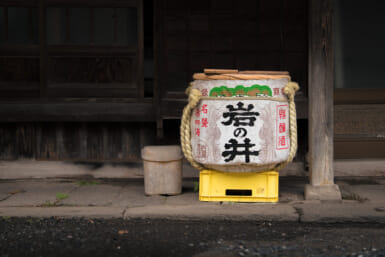Sawara, a charming and quaint town in Chiba Prefecture that served as a prominent trade hub in the Edo period, holds a deep connection to Japan’s history — a connection reflected in its serene, beautifully preserved streets. Located along the Ono River, which flows into the Tone River — Japan’s second longest — Sawara thrived due to its strategic link to the capital of Edo (modern-day Tokyo). Its significance in the past was so notable that it earned the nickname “Edo Masari,” which means “superior to Edo.”
Sawara also became known for its production of sake, soy sauce and other fermented goods — traditions that remain central to its identity today. This legacy of entrepreneurial spirit, along with a focus on innovation, continues to shape the town’s character, drawing visitors eager to explore its pristine streets and evolving culinary scene.
A Stroll Through History: Quaint Street Shops and Townscape of Sawara
The heart of Sawara’s historical district offers a journey back in time, where many businesses are still operated by families that have been there for generations. Visitors can explore the stone streets lined with dozens of Edo-era buildings. Nakamuraya Shoten, originally established in 1874, now sells Japanese-style accessories and miscellaneous goods; Fukushin Gofukuten, which was founded in 1804, specializes in Japanese fabric accessories and small cloth goods. Uedaya Aramonoten is known for its fine selection of high-quality tools from all over the country. Around town, other shops have been converted into cozy cafés and similar spaces, blending Sawara’s rich past with contemporary charm.
Nipponia Sawara Merchant Town Hotel further deepens this connection to the past. Housed in restored buildings that once served as merchant homes, sake breweries and storehouses, the hotel allows guests to experience the atmosphere of old Sawara firsthand. Nipponia offers a singular experience that bridges the town’s history with modern comfort.
Inoh Tadataka: The Mapmaker’s Legacy
A visit to the Inoh Tadataka Museum and his preserved home provides insight into one of Sawara’s most celebrated figures. Inoh Tadataka (1745–1818) spent over 30 years in Sawara before embarking on his cartography career in his 50s. He then spent nearly 17 years completing 10 survey expeditions across Japan, walking tens of thousands of kilometers and amassing vast amounts of data. Although he passed away before his magnum opus was completed, his disciples carried on his work for him, and the finished “Inoh Maps” were used throughout Japan for almost a century.
The museum, located across the river from his former residence, showcases the original Inoh Maps and his surveying tools, highlighting the precision and dedication that defined his work. Visitors can also explore his former home, including an earthen-walled storehouse, to see how his life in Sawara laid the foundation for his later achievements in mapping Japan.
Little Edo Sawara Boat Tour: A Journey Around Sawara’s Treasure, the Ono River
The Little Edo Sawara Boat Tour offers a peaceful, 30-minute journey along the calm waters of the Ono River, which flows through the heart of Sawara. Starting near the former residence of Inoh Tadataka, the tour provides a different perspective of the town’s historical district. As the shallow, motor-powered boat glides past drooping willows that sway gently toward the water, passengers are treated to views that cannot be seen from the streets alone.
The boat punters often share stories of Sawara’s past, even singing the old folk song with the lyrics, “If you want to see Edo, come to Sawara, Sawara’s superior to Edo.” It’s a playful nod to the town’s rich history and the enduring pride of its residents — a sentiment that’s hard not to catch as you drift along the river.
Katori Jingu Shrine: A Place of Reverence
Katori Jingu Shrine, one of Japan’s oldest Shinto shrines, is central to Sawara’s initial history and prosperity. Said to have been established in 643 BC and dedicated to the god of swords and warfare, Futsunushi-no-Okami, the shrine attracted travelers and merchants, further encouraging Sawara as a center of trade. This spirit lives on along the street leading up to the shrine, which has several shops and eateries catering to visitors.
After exploring the precinct, stop by Uno Café. Known for its vintage espresso machine and relaxed atmosphere, it’s an ideal spot to enjoy a coffee and reflect on the area’s rich past.

Sawara Grand Festival: Tradition in Full Bloom
Twice a year, the streets of Sawara come alive with the sights and sounds of the Sawara Grand Festival, one of the three major float festivals of Kanto with a history dating back about 300 years. The air fills with the rhythmic beat of taiko drums, the lively strains of traditional flutes and the cheers of locals in festive attire, and lanterns cast a warm glow over the scene. In July, the summer Gion Festival is held to appease the deity of epidemics, while October’s festival gives thanks to the god of the harvest.
During the festival, intricately decorated floats, each topped with towering figures that stand several meters tall, parade through the town. For those who miss the event, the Suigo Sawara Float Museum offers a taste of the festival’s atmosphere year-round.
Get a Taste of History at Babahonten Sake Brewery
Babahonten Sake Brewery has roots stretching back over 300 years; as its current steward, Yoshihiro Baba is not only a guardian of Sawara’s sake-making heritage but also well versed in the town’s history. His family’s brewery preserves traditional brewing techniques while adapting to modern challenges, producing sake and mirin — a sweet rice wine often used in Japanese cooking — that reflect the terroir of the region. “In the town of Sawara, at one point, there were over 30 sake breweries,” Baba recalls, “but now only a few remain.”
Baba reflects on the role of sake and soy sauce breweries in fostering the town’s culture. “The breweries were the original backers of the Sawara Grand Festival celebrations,” he says. “Each neighborhood had its own sake or soy sauce brewery, which would contribute by providing sake and funding for the festivities. It was our way of giving back to the employees and for them to let off some steam.” These festivals, with their extravagant floats and lively parades, were a symbol of the town’s prosperity and unity.
During its peak, Sawara thrived as a center of sake production, with its location along the Tone River enabling easy transport of goods to Edo. “The river was the lifeline,” Baba notes. “When the railroad came in the late Meiji period, it diminished the prosperity that came from water transport, and many breweries disappeared.”
Visitors are welcome to explore the brewery’s display building, which showcases historic brewing tools used from the Edo through the Showa eras, though entry to the brewery itself is by reservation only.
Visit the Studio of Kirie Master Masahiro Noguchi
Masahiro Noguchi, a master of kirie (paper cutting), draws profound inspiration from Sawara’s historic streets and cultural landscape. His art, meticulously crafted from black and white paper, captures the town’s intricate wooden facades and river scenes, revealing his deep bond with the place. “You can see the difference when a local creates art based on the town,” Noguchi says.
“The atmosphere — it’s a town that breathes with the past, yet thrives in the present,” he continues, highlighting the distinct energy of Sawara’s preserved townscape. “People are still living in these buildings, and it gives a feeling of life to the old streets.”
His creative process is deeply personal and painstakingly detailed. Noguchi describes the method: “I [create] a draft first, and I try to make sure everything stays connected — because if it’s not, the pieces will fall apart.” Working with precision, he cuts each piece using only a small knife, turning intricate sketches into layered compositions. Some of his larger works can take months, with every detail requiring focus and patience.
In addition to creating his intricate artworks, Noguchi occasionally holds workshops and exhibitions around Sawara, allowing visitors to experience the art of kirie firsthand. Visitors can stop by Noguchi’s studio to see his work up close and purchase prints. The studio is open from 9:30 a.m. to 6:00 p.m. and closed on Wednesdays.
Masahiro Noguchi Studio Address:
I-606 Sawara, Katori city
More Info
For more information, please visit Chiba Prefecture’s official tourism website.
To get to Sawara by train, take the JR Sobu Line from Tokyo Station to Narita Station. (This will take about 50 minutes on the Narita Express, but be mindful when boarding, as some Narita Express trains bypass Narita Station. On the regular train, it will take around 70–90 minutes, with a possible transfer at Chiba.) At Narita Station, change to a local Narita Line train and ride 30 more minutes to Sawara Station.
Alternatively, you can take an express bus from Tokyo Station to Sawara. The bus departs from the Yaesu Exit and takes around 90 minutes.
